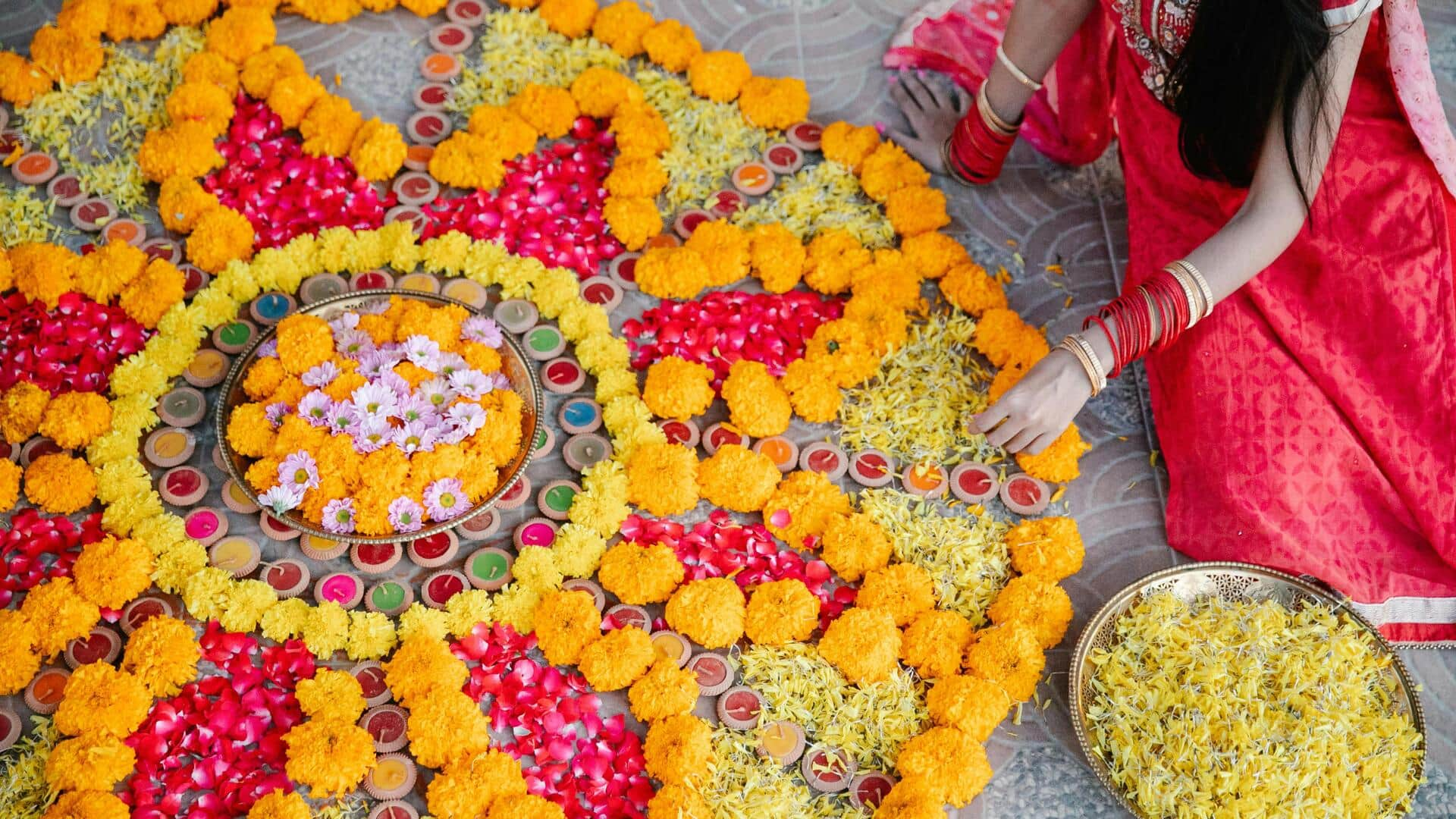
How to create stunning rangoli designs at home
What's the story
Rangoli, a traditional Indian art form, is a colorful way to welcome guests and celebrate festivals. The practice involves creating intricate patterns on the ground using materials like colored powders, rice, and flower petals. While traditionally associated with Hindu festivals, rangoli has become a beloved art form across cultures in India. It adds vibrancy to homes and public spaces, showcasing creativity and cultural heritage.
Materials
Understanding the materials used
Rangoli artists use a variety of materials to create their designs. Colored powders are the most common, available in vibrant shades. Rice flour is often used for its fine texture and ease of use. Flower petals provide natural color and fragrance, while small stones or beads can add texture and depth. Each material contributes to the overall aesthetic appeal of the rangoli design.
Techniques
Techniques for creating Rangoli patterns
Creating rangoli requires skillful techniques to achieve precision in patterns. Freehand drawing allows for creativity but demands steady hands for accuracy. Stencils offer consistency but may limit artistic expression. Using tools like brushes or cones filled with colored powder helps in detailing complex designs. Practicing these techniques enhances one's ability to produce intricate and visually appealing rangoli artworks.
Cultural significance
Cultural significance of Rangoli
Rangoli holds deep cultural significance in India as it symbolizes prosperity, purity, and welcome. It is often made at the entrance of homes during festivals such as Diwali or Pongal, to invite good fortune. The patterns can also convey specific meanings depending on their shapes and colors, making them not just decorative but also symbolic representations of cultural values.
Tips
Tips for beginners in rangoli making
For beginners venturing into rangoli making, starting with simple designs like circles or lines is advisable before progressing to more complex patterns. Using readily available materials like chalk powder or sand can make practice sessions easier without incurring costs initially. Regular practice helps improve skills over time, while experimenting with different styles fosters personal creativity within this traditional art form.